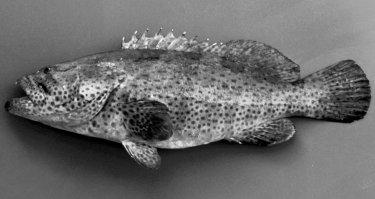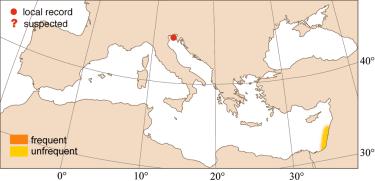
|
Relevant synonyms
Misidentification
Meristic formula
|
|
| photo : David Darom |
|
SHORT
DESCRIPTION
color :
body covered with orange to reddish-brown spots on pale greyish background with several irregular shaped darker bars. Large specimens have numerous but smaller spots.
size :
common 30-50 cm (max. 100 cm). |
DISTINGUISHING CHARACTERISTICS
BIOLOGY / ECOLOGY
habitat : benthic. Rocky and continental slope to depth of 100 m. Reported also to enter estuaries. |
|
1st
MEDITERRANEAN RECORD
|

|
|
DISTRIBUTION
|
ESTABLISHMENT SUCCESS
speculated reasons for success :
|
|
|
MODE OF
INTRODUCTION |
IMPORTANCE TO
HUMANS |
|
KEY
REFERENCES
|
|
 Epinephelus tauvina
Epinephelus tauvina